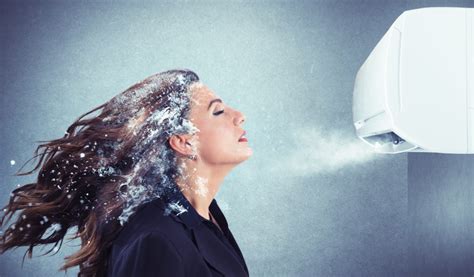Furnace blowing cold air? This article will also cover checking for leaky ducts, thermostats, a faulty circuit board, and a defective igniter. Follow these simple steps to fix your furnace and start enjoying comfortable heat again! If you find that the below solutions do not work, contact a heating technician for help.
Replace your thermostat
If your furnace blows cold air, the first step to troubleshooting this problem is replacing the thermostat. While most furnaces run on AUTO, there are instances when the thermostat has malfunctioned and is blowing cold air. Luckily, you can replace the thermostat yourself without a professional’s assistance. Your thermostat will ensure that the furnace communicates your home’s needs accurately. To replace the thermostat, you can purchase a programmable thermostat or a smart thermostat.
If your thermostat is not on the auto setting, the battery may have run down. Or, if your furnace is battery-powered, the thermostat may be incompatible with your heating system. Your HVAC professional can check the compatibility of your thermostat with your system. Another common cause of intermittent cold air is a clogged air filter. The safety switch shuts off the burners if the filter is clogged and the fan starts blowing cold air.
Faulty Thermocouple
Another cause for your furnace to blow cold air is a faulty thermocouple. This component regulates the ignition and gas valve. If the thermocouple fails, the furnace won’t be able to produce heat. The repair process for a thermocouple is simple, but you can also call an HVAC technician to check it for you. Otherwise, you can try a few other things to solve the problem.
Older models with pilot lights won’t engage the heat. A dirty flame sensor can also result in cold air. A dirty flame sensor could also prevent the furnace from heating the coils. When this happens, you should turn off the furnace via its power switch and call a professional to come to your home and fix the problem. If you continue to notice cold air, consider replacing your thermostat. If you suspect that the thermostat is the culprit, you may have a faulty burner.
Flame Sensor
The flame sensor may also be the culprit for your furnace blowing cold air. If the flame sensor is faulty, the furnace may initially heat up but stop producing heat altogether. A furnace not producing heat is one of the most frustrating issues you can face with a heating system. It can be challenging to fix, and it is best to get a professional to diagnose the problem. Otherwise, you may have to spend hundreds of dollars on a new furnace.
Faulty igniter
If your furnace has stopped working correctly, it may be due to a faulty igniter. You may notice that the ignitor does not produce a spark when the system switches on. Open the furnace and examine it to check if the igniter is on. If you see the light illuminating the igniter, it is not working correctly. Check for a cracked or corroded igniter cap and replace it. You can also try cleaning the igniter manually, but remember to keep your furnace off and take your time!
When the igniter fails, the gas furnace cannot ignite. It may not have the proper 120-volt electric supply. This surge can short circuit the ignitor, overload the circuit breaker, or obstruct the electric connection to the igniter. If the ignitor is not functioning, you should replace it. The other reason why the furnace won’t ignite is that it has a faulty limiter switch. A faulty limiter switch can shut down the furnace when too high.
A faulty igniter is the most common cause of cold air. You can replace this component yourself or get a professional to do it. Unscrew the plug from the surface and connect the multimeter to it to test it yourself. Please make sure the probes touch the tips of the igniter and do not damage it. If the igniter is faulty, you may need to replace it.
If you are having trouble getting your furnace to ignite, the igniter may be the culprit. This small flame is a result of a problem with the gas igniter. You can check if the pilot light is burning or not by using a long match. Alternatively, you can replace the entire unit with an electronic igniter if you have a furnace.
A faulty igniter could be the culprit if you wonder why your furnace is blowing cold air. If the igniter isn’t working correctly, your furnace may shut down as a safety measure. The blower motor can also malfunction, causing the furnace to cycle from cold to hot air.
Defective circuit board
When your furnace is not blowing hot air, check if there’s a problem with the circuit control board. The circuit control board relays commands to other parts of the furnace, including the blower and the burner. If it doesn’t send the correct signal, these parts may be faulty and need repair. Below are some common causes of furnaces not blowing warm air.
In modern furnaces, the fuse link should be easily accessible. Replace the fuse with a 3 amp fast-acting type. Replace it with the same type as you replaced the fuse, and make sure you buy the correct brand. Replace the fuse only if it is not the same amperage as the current one in the furnace. Contact a furnace service technician to fix the problem if it is the fuse.
Check for a faulty circuit board by looking for the diagnostic error code. Most modern furnaces have a diagnostic error code chart located on the front or inside of the blower compartment door. Look for the blinking LED light on the board. If you see it blinking, the problem may be in the roller or limit switch. If these are both working correctly, you can replace the board.
The circuit board will cause the furnace to shut off in some cases. To determine if it’s the cause of your furnace’s failure, you need to know how the board connects to the heater and how it operates. If your furnace has a faulty circuit board, you can follow these steps to resolve the issue. The next step is to replace the thermostat if it’s not digital.
Another common cause of a furnace blowing cold air is a faulty thermocouple. This component controls ignition and gas valve functions. Repairing the thermocouple can fix the problem, but you may need a technician to check your furnace. If the problem persists, contact your utility company for assistance. Alternatively, you can call an HVAC technician. If you can’t figure out why the furnace is blowing cold air, the problem may be with the circuit board.
Leaky ducts
If your furnace is blowing cold air after a few weeks or months, it may signify a leaking duct. The ducting in your home can have leaks, allowing hot air to escape into unconditioned spaces. You should also check the thermostat settings to ensure that the setting is on HEAT. A malfunctioning fan or belt could be the culprit and thermostat settings.
Another sign that you may have a leaking duct is considerable dust. It might be coming from the attic or basement. Unsealed seams can restrict airflow and increase energy costs. Also, look for leaks in your furnace cabinet or ductwork’s return. These holes can allow air to escape through the attic and into the house.
A large hole in the duct can let cold air inside and warm air out. A hole in the ductwork causes the system to work less efficiently, causing cold spots in your home. Make sure to hire a technician to inspect your ducts to ensure your home is comfortable. Performing a thorough inspection will help you find leaks and repair them quickly. It’s worth your time to prevent these problems from getting any worse.
Another sign of a leaky duct is the presence of hot and cold spots in your house. Hot and cold spots occur in areas of the house that are harder to cool or heat than others. If you notice these areas in your home, a leaky duct is likely the culprit. You can reduce energy loss and lower your energy bills by sealing ducts. You should never let an air conditioning technician lick his fingers when testing an air duct.
A leak in the supply side of the ductwork means that hot air from the attic is entering your home. If the air in the house isn’t balanced, the system is unbalanced and blows more air into the home than it takes out. A system out of balance will blow more air into the house than it takes out. If the pressure in your home is too high, the temperature will increase in your home.









